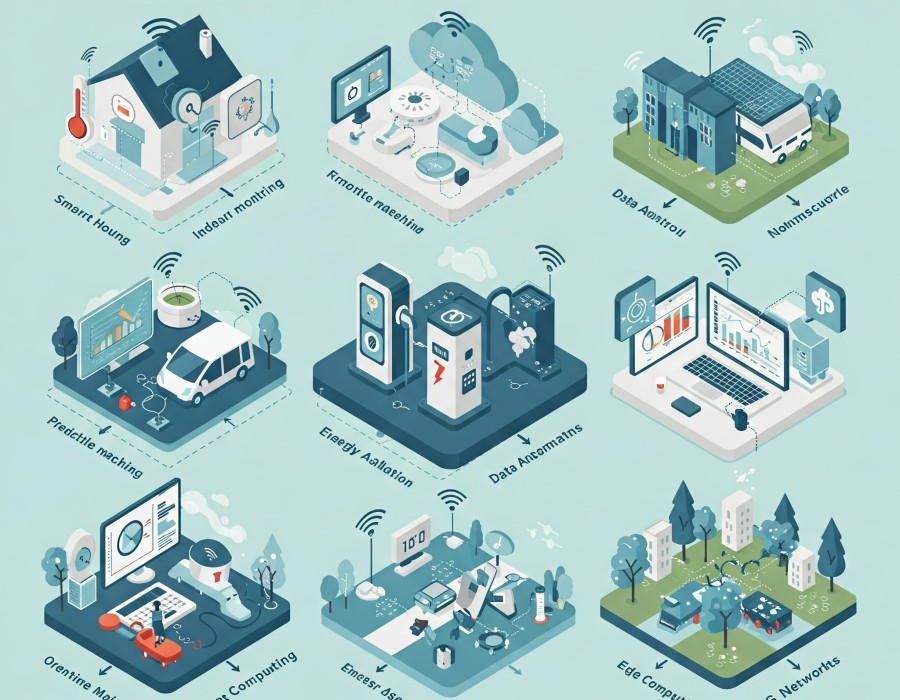IoT application development is the process of creating software that connects and communicates with Internet of Things (IoT) devices-such as sensors, smart appliances, and wearable gadgets. These apps collect data from devices, analyze it, and often let users control devices remotely. For example, a smart home app can help you adjust your thermostat from anywhere or send alerts if a smoke detector senses danger.
Why Are IoT Apps Important for Businesses?
- Boost Efficiency: Automate tasks and monitor equipment to save time and reduce costs.
- Better Decisions: Real-time data from devices helps managers quickly understand and fix operational issues.
- Customer Satisfaction: IoT apps can improve user experiences, like ensuring products are always in stock or personalizing services.
- Competitive Edge: Early adoption of IoT lets companies offer smarter, faster solutions than competitors.
Real-World Case Studies: How IoT Apps Make a Difference
Norsk Guardian’s Bluetooth Battery App:
Norsk Guardian, a company that makes lithium-ion batteries for outdoor activities, developed a Bluetooth-enabled app to monitor battery health. The app warns users about potential failures before they happen, keeping outdoor adventures safer.
SportPlus Fitness Equipment Integration:
SportPlus built an IoT app that connects to multiple workout machines, collects workout data, and provides personalized fitness insights. This not only enhances the user experience but also helps the company expand its product offerings.
Bosch’s Predictive Maintenance in Manufacturing:
Bosch uses IoT sensors to monitor machine health in real time. Their system predicts equipment failures, allowing timely repairs and reducing downtime, which boosts factory efficiency.
Barcelona’s Smart City Initiative:
Barcelona uses a city-wide network of IoT sensors to manage traffic, parking, and air quality. By analyzing this data, city officials can optimize traffic flow, reduce pollution, and improve public safety.
EV Charging App Development Example:
With the rise of electric vehicles, EV charging app development has become crucial. These apps help users find charging stations, monitor charging status, and schedule charging times. They often use IoT sensors at charging stations to provide real-time updates, making EV ownership more convenient and efficient.
Hire Python Developers for IoT Projects:
Python is a popular language for IoT development because it’s easy to learn and has many useful libraries for data collection, device communication, and analytics. Many companies hire Python developers to build IoT solutions like smart meters, industrial sensors, or even EV charging apps. For example, Python’s flexibility and readability make it a top choice for rapid prototyping and connecting various hardware platforms, from Raspberry Pi to cloud services.
Key Features of Successful IoT Applications
- Real-time Monitoring: Shows live data from devices so users can respond quickly.
- Remote Control: Lets users operate devices from anywhere.
- Data Analytics: Turns raw data into useful insights for decisions.
- User-friendly Interface: Makes complex data easy to understand.
- Security: Protects data and devices from unauthorized access.
Challenges in IoT App Development
- Device Compatibility: IoT devices use different hardware and protocols, making it hard to ensure all devices work together.
- Security: Protecting sensitive data and preventing unauthorized access is a major concern.
- Managing Large Data Volumes: IoT devices generate lots of data that must be processed and stored efficiently.
- Connectivity Issues: Reliable network connections are essential, especially for real-time applications.
Emerging Trends in IoT App Development
- Edge Computing: Processing data closer to devices to reduce delays and improve privacy.
- 5G Networks: Faster, more reliable connections enable advanced applications like autonomous vehicles.
- Digital Twins: Creating virtual models of physical objects to simulate and optimize their performance.
- Sustainable IoT: Designing eco-friendly devices and apps to reduce environmental impact.
Steps in IoT Application Development
- Concept Definition: Identify the problem and target audience.
- Selecting Hardware: Choose sensors, actuators, and processors that fit your needs.
- Choosing a Platform: Examples include IBM Watson IoT, AWS IoT, and Cisco IoT Cloud Connect.
- Design and Development: Focus on user value, security, and intuitive interfaces.
- Testing and Security: Test for compatibility, performance, and security vulnerabilities.
- Deployment and Maintenance: Launch the app, monitor its performance, and provide updates as needed.
Conclusion
IoT application development services are essential for making connected devices useful in real life. From smart batteries and fitness equipment to EV charging and city management, IoT apps are transforming industries and daily life. Python’s simplicity and strong libraries make it a go-to language for many IoT projects, so businesses often hire Python developers to build effective solutions. As technology evolves, IoT apps will become even more powerful, driving smarter decisions and better living for everyone.





Comments